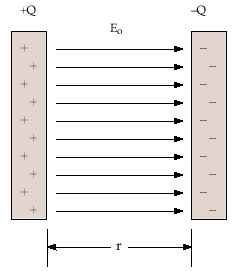Electrostatics: Gauss's Law & Electric Potential
1/7
Earn XP
Name | Mastery | Learn | Test | Matching | Spaced |
|---|
No study sessions yet.
8 Terms
Gauss’s Law
Φ = qenc / ε₀ = ∫E · dA
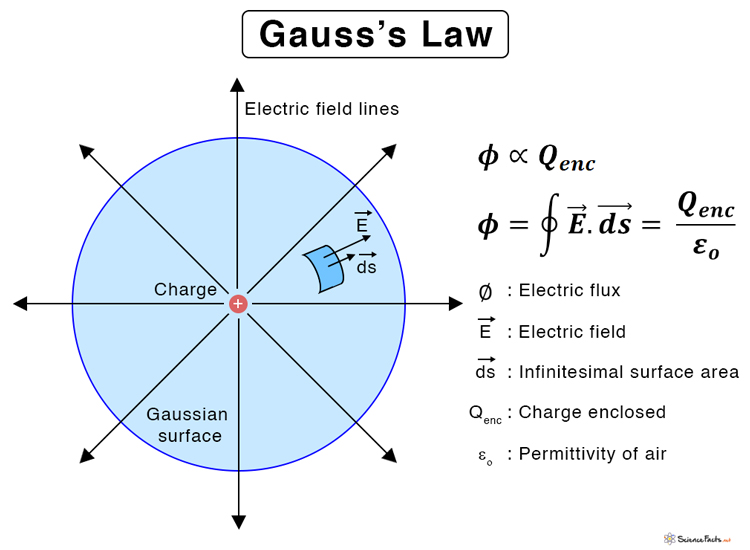
conductor
excess charge is located entirely on the outer surfaces
within a conductor, E = 0
field of a conducting surface
E = σ / ε₀, directed perpendicular to surface
Gaussian cylinder partially embedded perpendicularly into conducting surface (flux only through external end cap)
EA = qenc / ε₀
EA = σA / ε₀
E = σ / ε₀
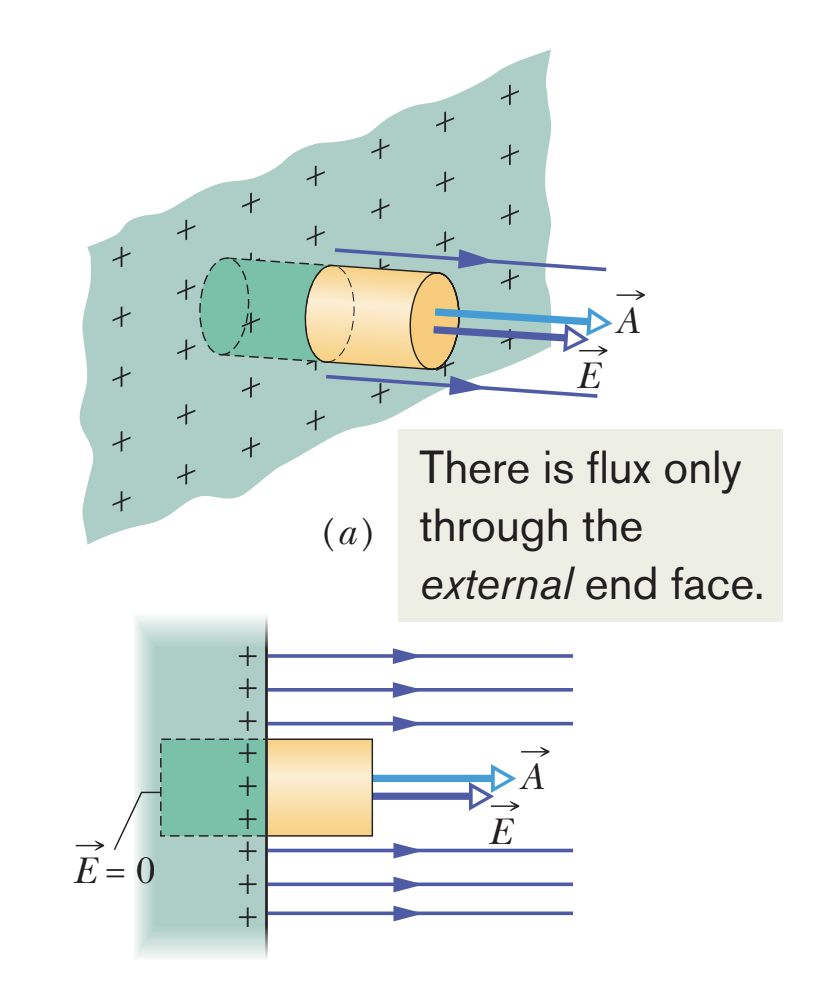
field of an infinite line of charge
E = λ / 2πε₀r, directed perpendicular to line
Gaussian cylinder (no flux at end caps as field only skims the surface without piercing through) = cylindrical symmetry
EA = qenc / ε₀
E(2πrL) = λL / ε₀
E = λ / 2πε₀r
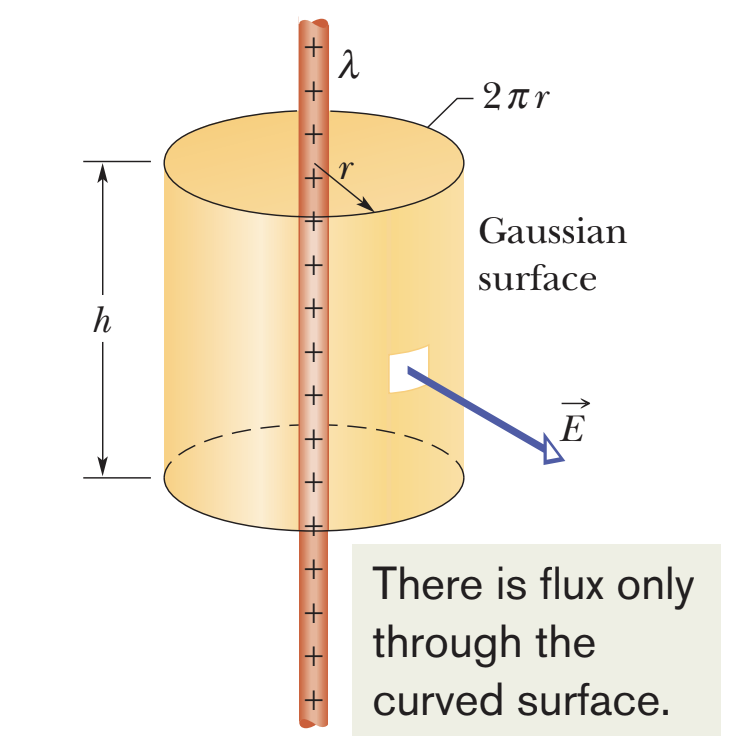
field of an infinite nonconducting sheet
E = σ / 2ε₀, perpendicular to sheet
Gaussian cylinder piercing the sheet perpendicularly (no flux at curved surface as field only skims the surface without piercing through; flux exists at both end caps) = planar symmetry
EA + EA = qenc / ε₀
2EA = σA / ε₀
E = σ / 2ε₀
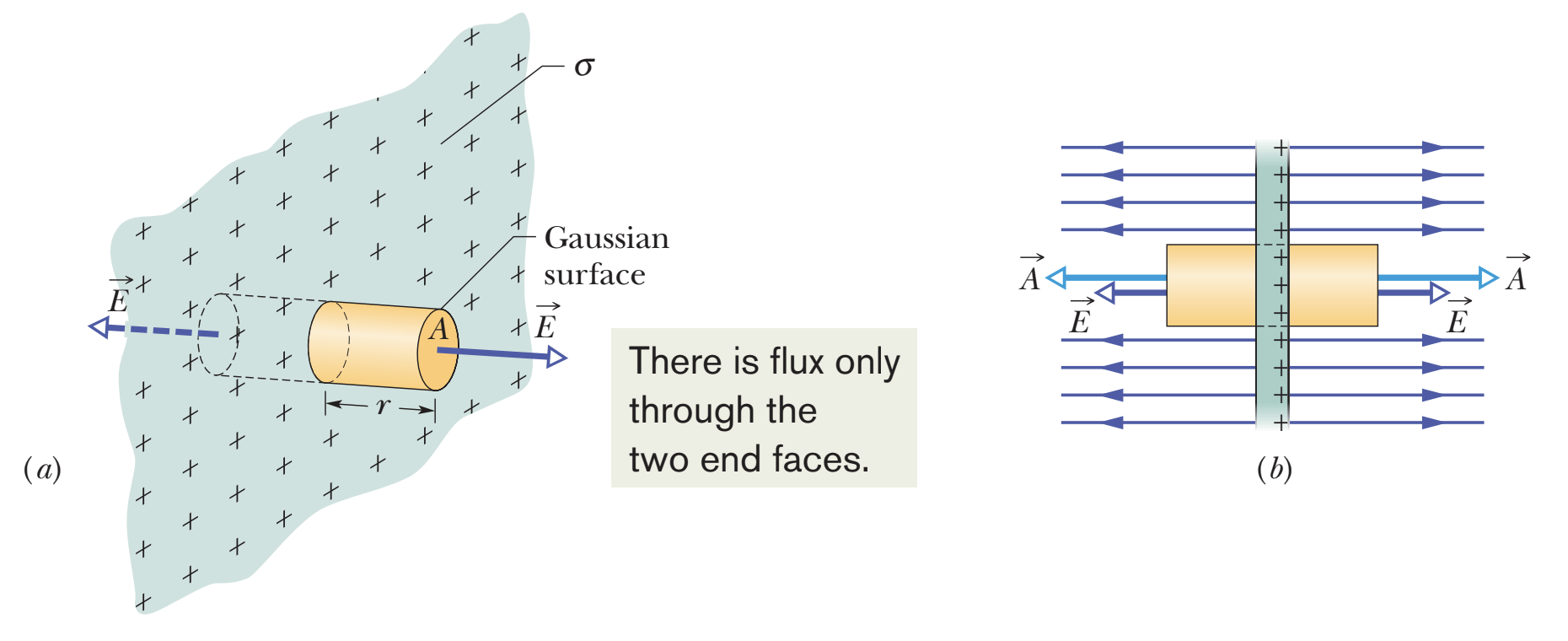
field of a spherical shell of charge
for r ≥ R (outside shell): E = (1/4πε₀)(q / r²), directed radially → E = qenc / Aε₀ = qenc / 4πr²ε₀
for r < R (inside shell): E = 0 → EA = qenc / ε₀ = 0
proves shell theorems: from outside the shell, charge behaves as if located at the center of the sphere; inside the shell, E = 0 and electrostatic force from the shell on a particle = 0
field inside a uniform sphere of charge
E = qr / 4πε₀R³, directed radially
EA = qenc / ε₀
E = qenc / Aε₀
E = qenc / 4πr²ε₀ = ρVenc / 4πε₀r²E = (qtot / Vtot)(Venc) / 4πε₀r²
E = (qtot / (4/3)πR³)((4/3)πr³) / 4πε₀r²
E = qr / 4πε₀R³
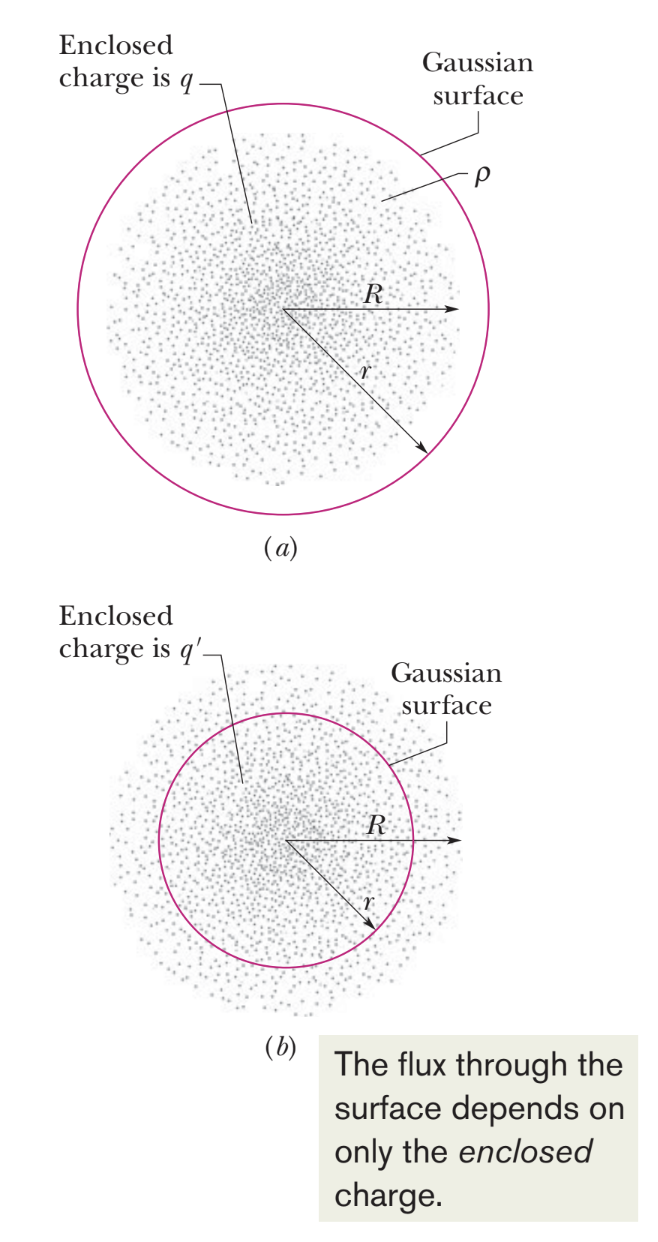
field of two conducting plates
between plates: E = σ / ε₀, directed away from positively-charged plate toward negatively-charged plate
to the left or right of the plates: E = 0
